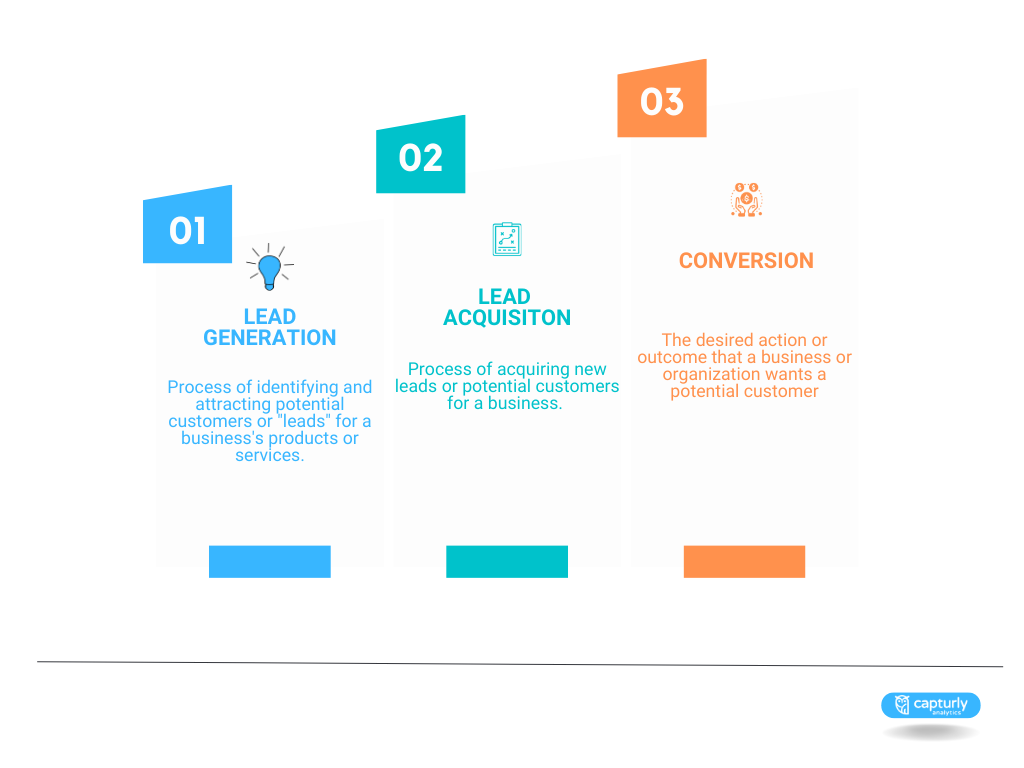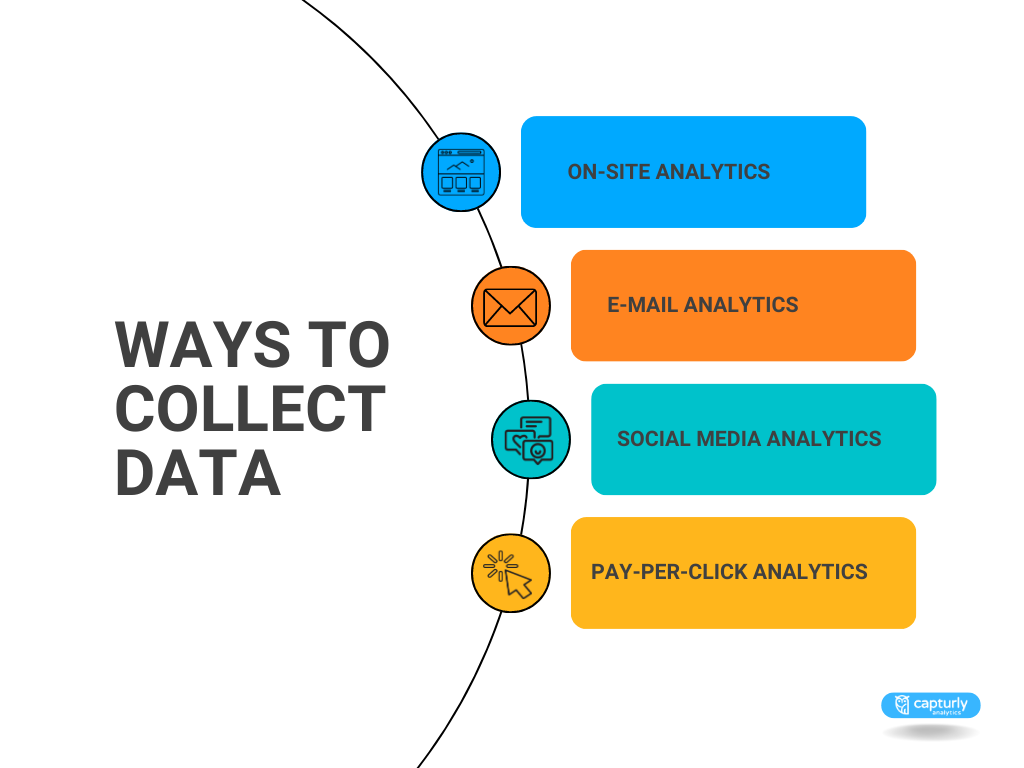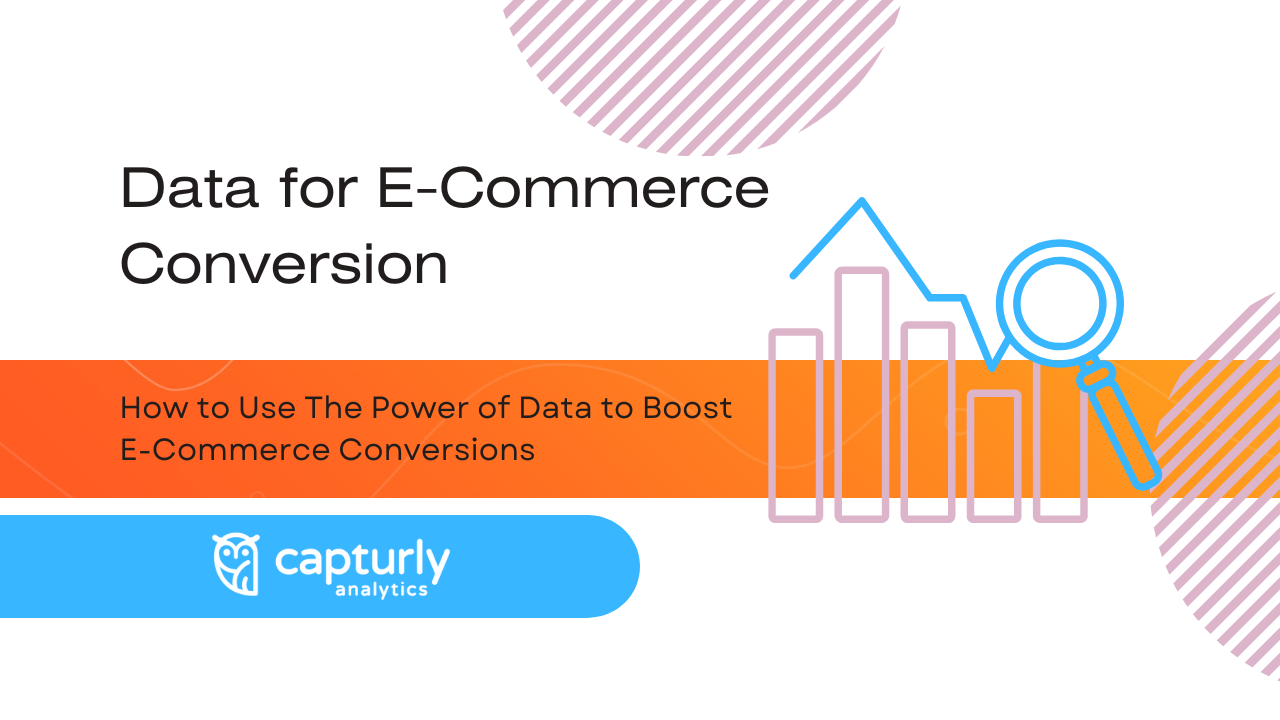In today’s world, data is considered one of the most valuable assets for digital marketing and sales. With its unique challenges and affinity for data collection, e-commerce is no exception to this trend. Indeed, e-commerce businesses can leverage data effectively to increase their conversions and revenue, gaining an edge over competitors.
From analyzing customer behavior to understanding their needs and preferences, data can provide valuable insights that can be used to optimize online stores and drive sales. Using data to boost e-commerce conversions spans the entirety of the conversion funnel, as we’ll see today.
In this post, we will explore the power of data in e-commerce and provide tips on how to use it to boost conversions.
Table of Contents
Types of data at the disposal of e-commerce
The e-commerce industry is, quite notably, built on data. Without access to data, it would be impossible to create the personalized customer experiences critical to success in this field.
There are several types of data that e-commerce businesses and vendors can leverage to increase conversions and drive growth. Here are some of the most important types of data:

- Customer demographics. This data includes information about the age, gender, income level, and other characteristics of a business’s target audience.
- Purchase history. Understanding what customers have bought in the past can help businesses create targeted recommendations and upsell opportunities.
- Website analytics. Metrics like pageviews, bounce rate, and time on site provide insights into how customers interact with a website.
- Behavioral analytics. Metrics on how visitors interact with your website. Data on what issues can prevent them from converting and what really works on the website of your e-commerce business.
- Social media metrics. Data from platforms like Facebook and Instagram can provide insights into how customers engage with a brand’s social media presence.
Thanks to digital marketing, these types of data are becoming increasingly valuable. Businesses collect and analyze data. Then they can use it to create targeted marketing campaigns, improve website user experience, and ultimately drive sales.
Furthermore, Movers Development advises leveraging all such data as best possible, creating holistic shopping experiences. They argue that using data to boost eCommerce conversions should begin from the initial stages of lead generation for maximum effect, as we’ll see next.
Using e-commerce analytics and data across the conversion funnel
As outlined above, e-commerce analytics and data are powerful tools that can significantly impact the success of an e-commerce business. By using them at every stage of the conversion funnel, from lead acquisition to conversion, vendors can gain valuable insights into customer behavior, preferences, and buying habits. This enables them to make data-driven decisions that improve the customer experience and increase conversions.
By leveraging data across the entire conversion funnel, e-commerce vendors can identify areas of opportunity, optimize their marketing strategies, and make more informed decisions about inventory, pricing, and promotions. It’s this application of data that best allows for identifying pain points, ultimately helping craft a better customer journey.

Lead generation
At the very beginning, data can enhance lead generation efforts. E-commerce vendors can leverage data and analytics to identify customer preferences, behaviors, and pain points, which can guide targeted lead-generation campaigns.
Notably, Search Engine Optimization (SEO) is also a critical component of lead generation, and its efficacy relies on accurate data. By analyzing website traffic, user behavior, and search queries, e-commerce vendors can identify the most effective keywords and phrases to attract and engage potential customers. This approach can best facilitate easier Conversion Rate Optimization (CRO) down the line when a steady influx of new users has been ensured.
Furthermore, SEO and CRO can work synergistically to increase the effectiveness of lead generation efforts. Accurate data can also help e-commerce vendors identify which channels are most effective in driving traffic and leading to their sites. By analyzing data from multiple sources, including social media and email campaigns, e-commerce vendors can optimize their lead generation efforts for maximum impact.
Lead acquisition
Next, using data to boost e-commerce conversions is all about creating personalized customer journeys that lead to increased lead acquisition rates. In this regard, e-commerce vendors can leverage data and analytics to determine the best channels and touchpoints for each unique customer. By doing so, they can optimize their marketing campaigns and tailor messaging to resonate with potential customers.
Analyzing website visitor behavior through such means as website heatmaps can also provide insights into what draws customers to the site and what leads them to convert. A deeper understanding of the customer journey can help businesses to create a seamless experience from the first touchpoint to conversion, ultimately resulting in higher lead acquisition rates and increased conversions.
Conversion
Finally, data is invaluable in today’s digital marketplace, where customers demand a seamless and personalized experience. These experiences ultimately secure conversions and what CRO best practices hinge on.
In this regard, businesses can leverage data and analytics to improve their conversion rates by understanding consumer behavior and identifying patterns that lead to successful conversions. This includes analyzing customer journeys, testing various sales funnel elements, and implementing effective A/B testing strategies.
By optimizing the user experience, e-commerce businesses can reduce cart abandonment rates, streamline the checkout process, and increase sales. In addition, data-driven insights can help vendors personalize their marketing efforts, including product recommendations and email marketing campaigns, leading to more effective customer engagement and, ultimately, increased conversions.
Using data to boost e-commerce conversions; best practices to engage in
Considering the above, leveraging data for CRO and general funnel improvements is easier said than done. Knowing how to collect data is one thing, and understanding how to harness the power of data best is another.
Let us start with the former, outlining some of the best practices for which e-commerce vendors can leverage data.

Product page optimization
First, e-commerce businesses can use data and analytics to optimize their product pages and directly boost conversions that way. By tracking customer behavior on product pages, vendors can identify areas that need improvement and make data-driven decisions to optimize those areas.
Some crucial practices for optimizing product pages include improving product descriptions, using high-quality images, providing customer reviews and ratings, and simplifying the checkout process. Improving page speed is also vital, as Cloudflare finds that improved speeds affect both traffic and conversion rates.
In combination, these practices can help reduce bounce rates, increase customer engagement, and ultimately lead to higher conversion rates. By using data to optimize product pages, e-commerce vendors can ensure they provide a seamless and effective customer experience, which is critical for driving sales and growth.
Price optimization
Second, price optimization is a fundamental means of using data to boost conversions. When engaging in dynamic pricing, vendors can accurately analyze market trends, customer behavior, and competitor prices. All of this can help them determine the ideal price for their products.
Understandably, this helps ensure the product pricing is competitive and profitable while maintaining the highest possible conversion rate.
To optimize pricing effectively, vendors can implement the following practices:
- Regularly monitoring market trends and competitor prices
- Using customer segmentation to determine pricing preferences
- Conducting A/B testing to determine the best price point
- Offering dynamic pricing based on customer behavior and purchasing patterns
- Using pricing tools and algorithms to automate the process
Such practices warrant consideration, as price optimization is crucial for vendors who want to remain competitive and profitable. Discussing B2B retailers, who face more conversion rate challenges than most, Boston Consulting Group found that retailers who implemented dynamic pricing saw an average increase of 2-5% in revenue and a 5-10% increase in profit margins.
Market basket analysis
Third comes market basket analysis, a data-driven technique that allows e-commerce vendors to discover correlations between products in customers’ shopping baskets. By analyzing customers’ purchase histories, vendors can identify which items are most commonly purchased together, allowing them to make data-driven decisions about product placement, bundling, and cross-selling. ResearchGate studies confirm the effectiveness of this practice, finding that it can increase customer satisfaction and sales.
To perform a market basket analysis, vendors must first collect transaction data and use analytics software to identify patterns in customer behavior. Once patterns have been identified, vendors can use the data to decide on future projects. Some projects can be about product placement, pricing, and promotions. They can even use the data to boost eCommerce conversions.
Key market basket analysis practices include:
- Identifying frequently co-purchased products
- Identifying the most popular products and product combinations
- Tracking changes in customer behavior over time
Trend discovery
Fourth, using data and analytics for trend discovery is a powerful tool. It can help e-commerce businesses to stay ahead of the curve and offer their customers the latest and most relevant products. This is a vital part of the impact of Big Data advancements on Ecommerce, as ResearchGate studies find, and is invaluable for overall sales funnel optimizations.
Key trend discovery practices include monitoring social media platforms, analyzing search queries, and keeping an eye on competitors. By discovering trends early and incorporating them into their product offerings and customer journeys, e-commerce vendors can increase engagement and drive conversions.
For example, suppose a vendor notices a spike in demand for a particular product. In that case, they can tailor their marketing efforts to highlight those products and make them more visible to customers.
Additionally, by staying up-to-date on industry trends and consumer preferences, vendors can create a more personalized experience for their customers, increasing their overall satisfaction and loyalty. Ultimately, using data and analytics to discover and leverage trends is a crucial component of a successful strategy, helping to boost conversions and drive revenue.
Customer sentiment analysis
Finally comes customer sentiment analysis, which is also a key component of using data to boost conversions. Customer sentiment analysis involves analyzing customer feedback, reviews, and comments to identify patterns and determine the overall sentiment toward a product or brand. Key practices in customer sentiment analysis include:
- Identifying relevant sources for data collection.
- Using natural language processing to extract insights from unstructured data.
- Tracking sentiment over time to identify trends.
Customer sentiment analysis is far from a passing trend, as more than 80% of companies are expected to engage in it this year. By delving into customer sentiment analysis, businesses can gain insight into customer satisfaction and improve their offerings to meet customer expectations.
They can tailor their offerings accordingly to enhance customer satisfaction and increase conversion rates by understanding customer needs and preferences more deeply.
Ways to collect data to enhance e-commerce operations
Having outlined the ways in which data can be leveraged, here we can highlight some of the most notable sources of data you can opt for. In no particular order, consider the following.

On-site analytics
First, and perhaps most notably, collecting on-site analytics is crucial for everyone operating in e-commerce and looking to optimize their sales funnel and increase conversions. By leveraging this data, e-commerce vendors can craft personalized customer journeys that address pain points and increase the likelihood of conversion.
Capturly collects and analyzes crucial metrics related to user behavior on a website. Putting such actionable insights to use is one of the most famous examples of using data to boost e-commerce conversions, and it often informs CROs substantially. Some key metrics worth tracking through Capturly include:
- Pageviews and bounce rate
- Actions per sessions and average session length
- Conversion rate
By analyzing these metrics, e-commerce vendors can identify areas for improvement in their website design and user experience and make data-driven decisions to optimize their sales funnel. This continuous testing, analyzing, and iterating process may sometimes feel daunting, but it rarely fails to pay off.
E-mail analytics
Second, e-mail marketing is an undeniably powerful tool for e-commerce vendors, and collecting email analytics is essential for maximizing its potential. E-mail marketing platforms, such as Mailchimp or Constant Contact, offer a variety of metrics that can help vendors analyze their email campaigns and make improvements for better results.
Key email metrics worth tracking include:
- Open rates
- Click-through rates
- Conversion rates
- Unsubscribe rates
- Bounce rates
By monitoring these metrics, businesses can gain insights into what resonates with their email subscribers and craft personalized customer journeys that lead to more conversions.
Social media analytics
Third, e-commerce businesses can also collect social media analytics to understand their audience better and optimize their social commerce strategy. This is a prime example of using data to boost conversions, and it can only become more prominent as social media integrate into e-commerce experiences.
Many social media metrics are worth tracking, but the main ones include the following:
- Impressions
- Follower growth
- Engagement rates
- Click-through rates
- Conversion rates
Using these metrics, vendors can monitor the performance of their social media campaigns and content, identify areas for improvement, and tailor their social media strategy to meet their audience’s needs better.
By tracking social media analytics, vendors can also gain insights into what content resonates with their followers, which can help them craft more personalized customer journeys that lead to more conversions.
Pay-Per-Click analytics
Finally, e-commerce vendors can also collect Pay-Per-Click (PPC) analytics to improve their digital marketing efforts and drive more sales. Through Google Ads and other PPC platforms, vendors can track the performance of their campaigns, analyze user behavior, and optimize their ad spending to achieve better results. The following are some of the primary metrics worth tracking:
- Click-through rate (CTR)
- Conversion rate
- Cost per click (CPC)
- Return on ad spend (ROAS)
By analyzing user behavior, businesses can learn what aspects of their ads resonate with their target audience and adjust their campaigns accordingly.
For instance, they may choose to bid on keywords that drive the most traffic or use ad copy that appeals to the user’s pain points. With such insights in hand, vendors can leverage PPC analytics. In turn, this will help them create personalized customer journeys. Furthermore, it will improve the chances of conversion.
Scraping the Web for e-commerce data
And lastly, using data to boost e-commerce conversions must begin with comprehensive data collection. The above analytics sources may not at all times suffice, and web scraping may be necessary depending on one’s goals.
Web scraping can enable vendors to crawl data from competitors’ websites and analyze it for insights, such as pricing, product descriptions, and reviews.
In turn, they can identify opportunities to improve their own website’s user experience and pricing strategies. Moreover, web scraping can provide vendors with valuable information about their target audience’s preferences, which can help them personalize their marketing campaigns and product offerings, in turn driving growth and increasing conversions.
There are primarily three main options on this front, which we may conclude with.
Building a customized web scraper
First, e-commerce businesses may build a customized web scraper to extract actionable data that can help improve their operations and increase conversion rates. Building a web scraping tool may require some technical knowledge. However, it can provide vendors with a wealth of information to help them stay competitive in their niche.
Using third-party scraping tools
If building a customized web scraper is not an option, e-commerce vendors can use third-party web scraping tools. Some notable third-party web scraping tool options include Import.io, Scrapy, and ParseHub. While these tools may be less flexible than custom web scrapers, they can be more affordable and accessible for small or medium-sized businesses.
Using web scraping APIs
Lastly, web scraping APIs are also a powerful tool for e-commerce vendors to consider. Using APIs may require a bit of coding knowledge. However, it can be an effective way to obtain data at scale. Some notable web scraping APIs include Scrapy, BeautifulSoup, and Selenium. Much like web scrapers, these tools offer a cost-effective and efficient way for vendors to extract data from various sources and websites, including competitors, to help improve their operations.
Conclusion
In conclusion, using data to boost e-commerce conversions is an increasingly valuable tool for digital marketing. The availability of data and analytics tools makes it easier than ever for businesses to track and understand their customer’s behaviors and preferences.
In addition, the industry has unique challenges, such as high cart abandonment rates, which data and analytics can help overcome. By tracking key metrics and using insights to optimize customer journeys, businesses s can increase conversion rates and boost sales.
As digital marketing continues to evolve, data-driven strategies will become increasingly crucial for success. By leveraging the power of data businesses can stay ahead of the curve and deliver personalized experiences that drive conversions and improve customer satisfaction.
Don't forget, sharing is caring! :)


1 Comment
https://www.dissertationproposal.co.uk/dissertation-assistance-service/
2023-05-29 at 07:49Amazing blog for E-commerce, I will open my e-commerce store with this blog very valuable for me. thanks!